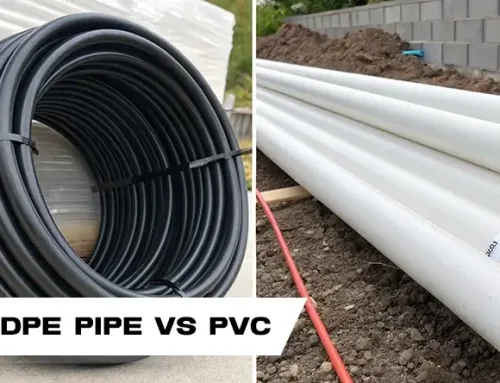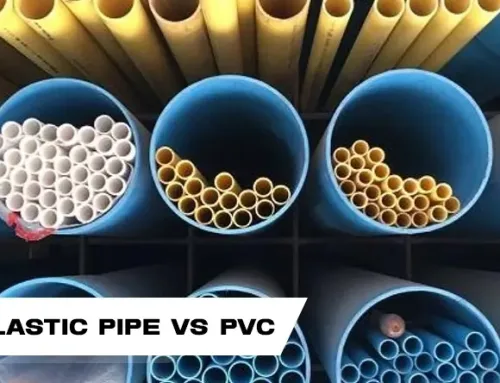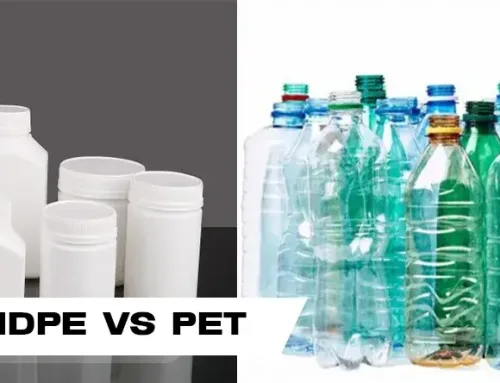Polyethylene terephthalate plastics, also known as PET plastic, are extensively utilized in the packaging sector, particularly for manufacturing bottles as well as food and beverage containers. In recent years, this material has become one of the most preferred plastics all over the world because of its lightweight, durability, and high transparency. Nevertheless, the primary concern that many consumers may have is, “Is PET Plastic Safe?” This is a very crucial question to consider, especially since it has a huge significance regarding human health and the environment. In this article, we will try to analyze the safety criteria of PET plastics concerning their usage and dispositions and try to bring up various issues in this regard.
What is PET Plastic?
One of the most frequent and challenging questions consumers ask is: Is PET Plastic Safe? First, and to answer this question clearly, we need to define this concept. PET plastic also referred to as Polyethylene Terephthalate, is classified as a thermoplastic polymer, which has high strength, is transparent, lightweight, and non-toxic. Nowadays, PET plastic is commonly used in the creation of bottles, food and beverage containers, electronics, and even clothing. Among the many materials used for packaging, PET is regarded as being impact-resistant, lightweight, and transparent so the contents of the package can be easily visible.
Some common products packaged in PET are water, carbonated drinks, oils, sauces, medications, and beauty products. On PET bottles and containers, a recycling mark with number one (1) indicates they are recyclable. As much as PET plastic is easily identifiable and recyclable, there are still issues surrounding the process of recovering and reusing these types of plastics.

Is PET Plastic Safe for Drinking Water?
After answering this question Is PET Plastic Safe, another question arises. Many consumers want to know “Is PET plastic safe for drinking water”. Across the globe, PET bottles are employed in the packaging of drinking water. Bottled water packagers have also favored PET because of its superior transparency and shatter resistance. As a plastic, PET is considered safe and medically important, it does not give off any toxic or dangerous fumes when within its prescribed parameters. The World Health Organization and the Food and Drug Administration, along with other health and food authorities, have laid out rules specific to the use of PET for food and drink packaging, which shows endorsement of the material’s safety.
However, the most popular of these worries surrounds the challenge of reusing PET bottles for water consumption. People ask Is PET plastic safe to reuse? Drinking water packaged in a PET bottle becomes a health hazard directly bound to these points. It is well known that good quality PET bottles should never be exposed to heat or kept at high temperatures or else it poses some serious health risks. Antimony and diethylhexyl phthalate (DEHP) are two elements that leech off the bottle at high temperatures or in direct sunlight.
Is PET Plastic Safe for Hot Water?
One of the bad things about PET plastic is that it is quite heat-sensitive. So, Is PET plastic safe for hot water? When PET bottles are exposed to hot water (above 60°C or 140°F), they become deformed and even leak dangerous chemicals. This can especially be seen when the bottles are exposed to more than 70°C. In this case, chemicals and plasticizers in the plastic seep into the liquid and are toxic to health. Hot-water washing or hot-temperature dishwasher treatment of PET bottles may also lead to a similar process that will have health hazards. For this reason, the use of PET plastic for hot liquid is not recommended. As a matter of avoidance of risks, alternative materials such as glass and stainless steel are recommended to be used as vessels for hot liquids.

Which Plastic is Safe for Boiling Water?
Is PET Plastic Safe generally said that while PET is not healthy at very high temperatures, certain plastics are more heat tolerant. Specifically, plastics like HDPE (high-density polyethylene) and PP (polypropylene) are more heat-resistant. These are used in the packaging of foods and drinks exposed to high heat. Even these plastics, though, can disintegrate and release their chemicals at extremely high temperatures or over a long period.
So in answer to the question “Is PET plastic safe for hot water?” should say that with heat-resistant plastics, there is always caution to be exercised. To ensure your health, it is better to use something else such as glass or stainless steel to store hot liquids that pose no health risk.
Is PET Plastic Safe to Reuse?
As we said, the constant concern of consumers of this product is the question Is PET Plastic Safe?
Another very challenging concern: Is PET plastic safe to reuse? PET (polyethylene terephthalate) plastic is primarily used for packaging food and beverages in single-use bottles. The bottles are not typically designed for reuse or re-storage because of consumer health and safety factors. Although the majority of people reuse bottles for domestic use, such as for storing water and beverages, experts warn about the problems caused by the repeated use of PET plastic. The reuse of PET bottles can result in the degradation of chemicals in the plastic, which can be transmitted to the human body over time. The effect is especially strengthened by exposure to the sun. Heat and ultraviolet radiation can result in the breakdown of PET plastic structure that releases chemicals such as antimony and phthalates from the plastic. The chemicals can affect human health, especially when reusing the bottles and exposing them to heat or direct sunlight.

Is PET Plastic Safe for Humans?
In addition, consumers should have sufficient information about whether Is PET Plastic Safe, They should also know Is PET plastic safe for humans or not. PET plastic itself is not dangerous to humans when used in ordinary situations, yet testing has discovered that some of the chemicals tend to leak out of the plastic eventually and into the food or beverages. One of those is antimony, a component used in making PET that also migrates out of the plastic in certain conditions. Ordinarily discharged in minute amounts, extended or continuous use or frequent usage of PET bottles may prove detrimental.
In the continuation of the discussion about whether Is PET Plastic Safe, it should be added that these chemicals become harmful only if they get absorbed into the body over a very long period and in large quantities. Normally, the concentration of these poisonous materials in PET plastic is so negligible that it poses no severe threat. However, research has shown that when PET plastic is heated, these kinds of chemicals are emitted and become toxins that can ultimately lead to chronic diseases such as hormonal imbalance, reproductive issues, and even cancer.
Is PET Plastic Toxic?
Is PET Plastic Safe? Yes, PET plastic is taken as a non-toxic material under usual conditions, especially if it is used under normal circumstances. However, under certain circumstances, such as high temperature, and long exposure to sun or heat, PET plastic releases toxic chemicals such as antimony and phthalates. These are dangerous when consumed in excess and can damage the body. Therefore, to be safe, it is recommended not to use PET plastic at high temperatures or store hot material.
So when Is PET plastic toxic? In high temperatures, PET plastic disintegrates its shape and releases some chemicals not released under normal conditions. It is therefore necessary to record the temperature, duration of use, and storage condition of PET plastic to avert dangers.
Is PET Plastic Safe for Alcohol?
PET bottles are usually intended to be used to hold soft drinks, but storing alcohol in them is not recommended. So, Is PET plastic safe for alcohol? Alcohol may interact with PET plastic and emit poisonous chemicals, such as antimony. The interaction may change the taste and smell of alcoholic beverages and become a threat to the health of consumers. Due to this, storing alcohol would be best if done in glass or metal containers, which do not readily emit poisonous chemicals.

Alternatives to PET Plastic
Some alternatives to PET plastic that are safer for storing food and beverages include:
- Glass Packaging: Glass is the perfect replacement for PET plastic because glass is non-reactive to food and beverages and can withstand heat like plastic. Glass is not a chemical leaching in foods and is also suitable for storing hot materials.
- Stainless Steel: Stainless steel is highly resistant and highly suitable for containing food and drinks. Not only does it prevent chemical leaching, but it is also more eco-friendly.
- HDPE (High-Density Polyethylene): It is stronger than PET and is used for storing food and drinks. It is good for lower temperatures and has less chemical leaching.
- PP (Polypropylene): It is also resistant to heat and physical damage and can be used as a PET alternative that is safe for application.
Conclusion
In a general answer to this question Is PET Plastic Safe we can say that PET plastic is typically safe under certain conditions, such as single-use for food and beverage packaging, but repeated uses of the plastic or exposure to heat or sun can cause problems. Chemicals released from PET plastic can prove to be health hazards in the long run. To avoid such issues, it is recommended that consumers exercise care when it comes to temperature and usage time when employing PET containers and, where feasible, use safer options like glass, stainless steel, or other plastics.







I like this blog its a master peace ! Glad I discovered this on google .
Thank you for your kind feedback. We are delighted that you found our blog valuable and appreciate your support.